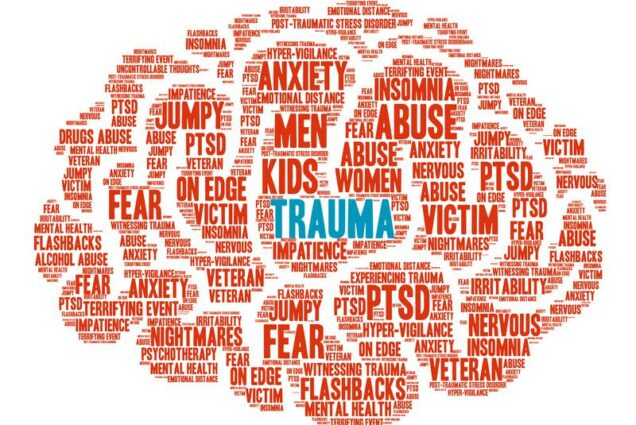Eye Movement Desensitization and Reprocessing (EMDR)
What is trauma? “Trauma is an unexpected and sudden event, a shocking event, there is a feeling of bodily harm or that somebody can hurt me, physically and emotionally. It usually includes an intense terror and a feeling of helplessness” (MIMH, 2008). Trauma is individual, and not everyone has the same experience with it. Even when two people experience the same traumatic event, one can be traumatized but not the other one.
Trauma can result from neglect, traumatic grief, school violence, medical trauma, refugee and war trauma, community violence, complex trauma, and domestic violence (MIMH, 2008). Being trauma-informed at any stage of your life or in any career path can make a difference in someone’s life. Trauma impact can be long-lasting if a person does not receive intervention at the time, and it varies from person to person. What a person needs after a traumatic event is to feel safe.
Van der Kolk, 2016 expresses how the idea behind trauma is for a person to feel safe remembering and to stare reality in the face. Reliving trauma memories can be traumatizing enough, so even though exposure therapies are important, it is also essential to make treatment safe for patients.
Eye Movement Desensitization and Reprocessing (EMDR) is an exposure treatment in which patients perform saccadic eye movements while thinking about a traumatic experience’ (Van der Kolk et al., 2007, p. 38). Patients can recover in as little as 1 to 3 sessions without relieving their trauma and making it more traumatizing (Van der Kolk, 2014). From the three examples given in the Van der Kolk, 2014 readings, we saw how Kathy, David, and even Bessel’s colleague recovered after EMDR treatment.
The video by the Lukin Center, 2021 shows an EMDR session step by step, it does include a lot of steps that I was not expecting, but even at minute 9, the person was already showing improvement in some of her thinking and feelings. I am a very impatient person and do not think this could work for me, it is slow, and I still need to get how people get all these memories and feelings in seconds and replace the feelings of those memories so quickly. It does look that after a professional and patients try EMDR, they all realize how good it is. Tricia Walsh, 2017 during her TEDxTalk explains how after 4 EMDR sessions she was a completely different person, and her anxiety improved so much. Tricia Walsh, 2017 was able to feel safe again and to understand that it was never her fault what happened to her.
Throughout the Van der Kolk, 2014 book, we have seen how multiple times Van der Kolk, 2014 mentions how important it is to understand after a traumatic event that “that was then and this is now,” but getting to that point is not easy for everyone. Most people do not want to remember their traumatic event and instead block it. Bessel et al., 2007 conducted a study on 88 PTSD patients; the idea was to compare a pharmacological intervention with a therapeutic one, in this case, a Serotonin Inhibitor and EMDR.
The study results showed that “the psychotherapy intervention was more successful than pharmacotherapy in achieving sustained reductions in PTSD and depression symptoms, but this benefit accrued primarily for adult-onset trauma survivors” (Van der Kolk., 2007, p. 37). Unfortunately, when it came to people that suffered childhood trauma, there was no evidence that a person was successful in recovering from trauma with the use of either of the interventions.
It is still hard for me to understand how a person can be “fixed” and benefit so much when they do not have to talk about their experiences and when many memories are being “observed simultaneously. However, we must remember that what works for us does not work for others. Personally, talking during therapy is what works for me. However, Bessel, again, gives a great explanation of why EMDR is successful because even though “exposure treatment is important, blasting people with the memory of their trauma is traumatizing to them again.” So, EMDR is a way to make people feel safe and understand that it was terrible, but it happened a long time ago, and they are in a safe place now, and each person’s mind and brain have the power to heal them (Van der Kolk, 2016).
Citations.
Missouri Institute of Mental Health (Producer), & . (2008). Trauma 101: Understanding the Impact of Trauma. [Video/DVD] Missouri Institute of Mental Health. https://video.alexanderstreet.com/watch/trauma-101-understanding-the-impact-of-trauma.\
Walsh, T. 2017. Eye Movement May Be Able To Heal Our Traumas. TEDxUCDavisSF. https://www.youtube.com/watch?v=lOkSm90f2Do
The Lukin Center. 2021. EMDR Therapy: Demonstration & Step-by-Step Walkthrough. https://www.youtube.com/watch?v=M2ra8p4MSOk
Van der Kolk, B et al. 2007. A Randomized Clinical Trial of Eye Movement Desensitization and Reprocessing (EMDR), Fluoxetine, and Pill Placebo in the Treatment of Posttraumatic Stress Disorder: Treatment Effects and Long-Term Maintenance. The journal of clinical psychiatry. https://www-psychiatrist-com.ezproxy.bu.edu/read-pdf/16611/
Van der Kolk, B. 2016. Bessel van der Kolk on Effective Trauma Treatment with EMDR. PESI INC. https://www.youtube.com/watch?v=EgCDzYro2I8
Van der Kolk, B. (2014). The body keeps the score: Brain, mind and body in the healing of trauma. Penguin Books.